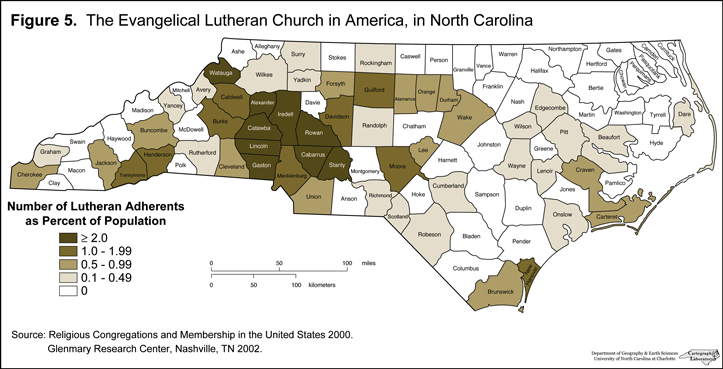See also: Lutheran Church; Lutheran Schools of Mount Pleasant; Lenoir-Rhyne College
Congregations of the Evangelical Lutheran Church in America (ELCA) also have a link with North Carolina’s past. During the colonial period, German migrants settled on the Piedmont corridor and established Lutheran churches as they did. Figure 5, above, illustrates the contemporary pattern of these churches. It appears to reflect this historic pattern, with the highest proportions occurring in the central part of the state along the Piedmont corridor and in the Wilmington area. Again, apparently some of the retirees who moved to the state are Lutherans, as shown by the higher proportions in Moore and Watauga counties, as well as in and around the Asheville area. Still others are along the central Coastal Plain, another site favored by retirees. ELCA congregations are mid-sized, with about 375 adherents each.
Another component of the Lutheran Church is the Missouri Synod. It differs from its larger counterpart by espousing a literal interpretation of scripture and denying ordination to women. While significantly smaller than the ELCA, Missouri Synod congregations grew faster between 1990 and 2000 (Table 1). These congregations are found in much the same areas as the more numerous ones of the ELCA.
